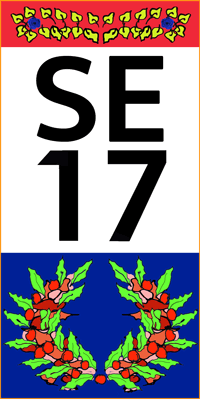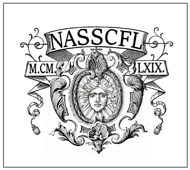
Detail from: Andre Stech delin., L[ambert] Visscher sculp., frontispiece of Johannes Hevelius, Cometographia (Gdani: Simon Reiniger, 1668).
In the “Avis au lecteur” by the fictional “editor” of the anonymous first edition of a book that would come to be known in subsequent editions as Pensées diverses sur la comète, Pierre Bayle cites a comment Dennis de Sallo made just one month into the publication of Le Journal des sçavans: “Il se fera tant de discours sur la Comète, qu’enfin chacun en trouvera qui lui soit propre. Il s’en est fait pour les Astronomes, et…pour les personnes qui ne se sont jamais donné la peine d’observer le Ciel” (Journal des sçavans, 16 Feb 1665, 82).
Both authors wrote in moments that astronomer, priest, and mathematician Alexandre-Guy Pingré (1711-1796) would describe as “cométomanies,” comet-manias during the winters of 1664-65 and 1680-81 that drew the learned and the illiterate, the fashionable, the seedy, and the serious outdoors into public squares and onto bridges and rooftops to view the recurring spectacle of comets, visible to the naked eye. While major developments in observation and mathematics had rendered the movements of stars and planets predictable by the mid seventeenth century, the long elliptical orbits of comets were not discernible without calculus. No matter how much savants and curious members of the public mapped, recorded, and corresponded, the position and timing of the comets’ appearances resisted attempts to discover a predictable pattern. They seemed random.
Having spent the last years exploring public fascination with these comets, and the ways it ramifies in literary expression, from the burgeoning periodical press to ballets and comedy, institutions and ideas, I could not help but be captivated by this winter’s mania: the drones of New Jersey. This December, as in December 1664 and 1680, unexplained and unpredictable night lights drew people’s attention all over the Garden State, and then throughout an expanding slice of the American East coast. Sometimes history has considered “my” comets an index of the demystification of the natural world. Really looking at the conversations and texts that the comets occasioned, however, shows seventeenth-century cométomanes to be strikingly diverse. As de Sallo and Bayle both comment, people engaged with comets with a wide range of attitudes, from the arch and witty poems in the Mercure galant that got recycled in a one-act comedy to the passionate plea for royal patronage that led to the establishment of the Académie royale des sciences and the construction of the Observatoire. Likewise, the drone sightings have focalized a variety of preoccupations. There are the modern day “Astronomes” whose reasoned appeals to optics, astronomy, and data about Christmas gifts and airport flight patterns attempt to explain the sightings and diffuse concerns. The comedians who turn them into New Jersey bits. A Real Housewife reality star who engaged viewers in TikToks where she used coded language about Dior bags to discuss the phenomenon.
As everything seems to be these days, the question of drones has fallen into the vortex of our polarized political discourse. Against statements by the FBI, FAA, DoD, and DHS and Joe Biden’s attempt to reassure the public that the unexplained lights represent “nothing nefarious, apparently” lies Donald Trump’s assertion that the drones are yet one more example of a government conspiracy: “I think it’s ridiculous that they’re not telling you what’s going on with the drones.” Drones seem to rank up there with deporting immigrants, prosecuting enemies, and cutting government programs as something Trump promises to tackle in the first days of his impending presidency. The two cométomanies I studied also coincided with an era of shifting political winds, bookending the first decade and a half of Louis XIV’s personal reign, from the Fouquet trial through the first round of major renovations that leant the Versailles château and gardens their solar décor. Then as now unruly objects in the night sky offered the occasion to discuss, debate, hypothesize, fabulate. Then as now they offer the pleasure of novelty for a culture of distraction. While any consensus on base reality seems elusive, the night lights make visible new social constellations and new media that organize social groups and generate people’s sense of reality -- then: periodicals, school ballets, and the truthiness of novelistic vraisemblance; now: social media unmoored of fact-checking and a data landscape that seems to lay bare all aspects of our lives to algorithmic manipulation.
Probably by the time you read this, the New Jersey drones will have receded from public attention (even if planes, satellites, the constellation Orion, and all of the actual drones in circulation have not disappeared). But this ephemeral quality is the essence of their allure and their uneasy attraction, the cometic sparkle and the baffled looking that it occasions drawing attention and people into new constellations.
– Claire Goldstein, University of California Davis
In the Sun King’s Cosmos: Comets and the Cultural Imagination of Seventeenth-Century France
(30% off with code MLA30 through February 10)
Early Modern Hot Takes offers reflections from early modern scholars on trends, topics and events we’re thinking about and living through. Our vibe is pièces de circonstance, timely and untimely.
Réflexions à chaud et pièces de circonstance sur les évènements contemporains, vus par des spécialistes de la première modernité.
Edited by Chloé Hogg, University of Pittsburgh



